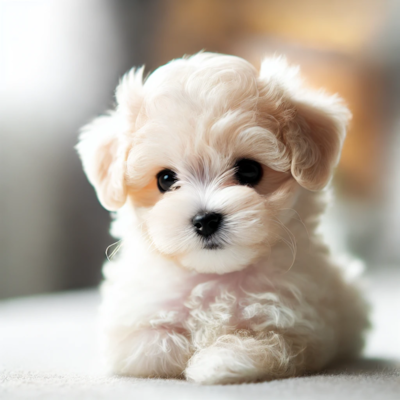
If you're looking for a pint-sized bundle of joy with a big heart, the Teacup Maltipoo might just be your dream dog. This sweet mix of the Maltese and Poodle breeds is known for its affectionate nature, intelligence, and, of course, its tiny size. Weighing in at just a few pounds, the Teacup Maltipoo is the epitome of a lap dog.
But there's more to this little dog than just its adorable appearance. Teacup Maltipoos are incredibly social and thrive on human interaction, which makes them perfect for families, singles, or seniors who are looking for a small, lovey-dovey, and playful pet. Their small stature also means they’re great for apartment living, but don't let their size fool you—they have plenty of energy and love to play.
Owning a Teacup Maltipoo comes with unique responsibilities. Because of their delicate nature, they require special care, especially when it comes to health and safety.
In this article, I'll walk you through everything you need to know about the Teacup Maltipoo, from its personality and lifespan to its grooming needs and dietary requirements. Whether you're considering bringing one of these tiny companions into your home or you're already a proud Teacup Maltipoo owner, this guide will give you all the insights you need to ensure your furry friend lives a long, happy, and healthy life.
Table of Contents
What is a Micro or Teacup Maltipoo?

A Teacup Maltipoo, also known as a Micro Maltipoo, is an adorable, tiny version of the standard Maltipoo, which itself is a crossbreed between a Maltese and a Poodle. While the standard Maltipoo typically weighs between 5 to 20 pounds, Teacup Maltipoos are bred to be even smaller, usually weighing between 2 to 5 pounds. This ultra-miniaturized version of the Maltipoo is incredibly popular among dog lovers who are drawn to its small size and charming personality.
The "teacup" label isn't an official breed designation but rather a term used to describe these miniature puppies. Despite their tiny stature, Teacup Maltipoos carry the same desirable traits as their larger counterparts: they are intelligent, affectionate, and low shedding.
Teacup Maltipoo Temperament
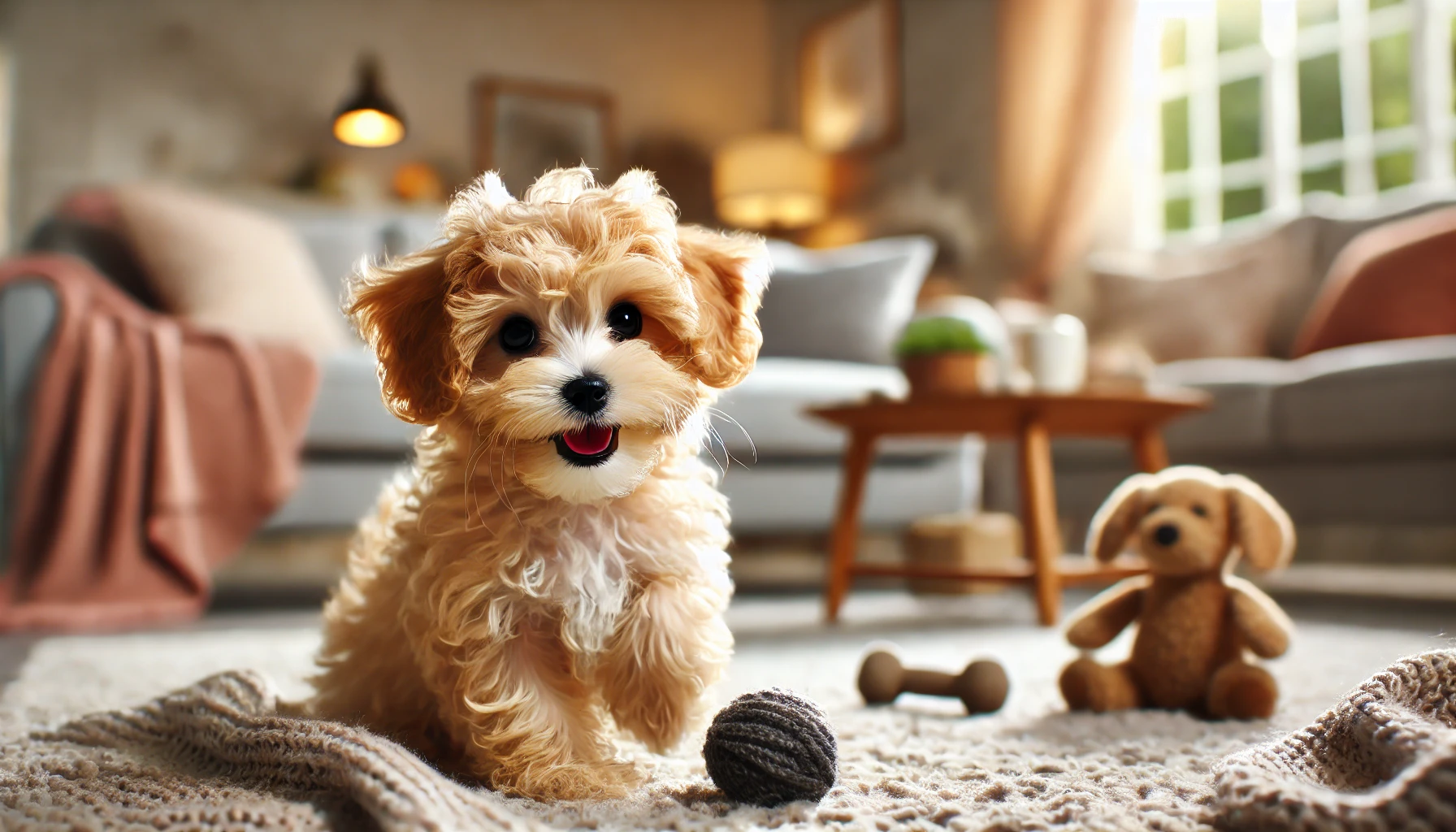
Teacup Maltipoos might be small, but their personalities are anything but. These tiny dogs are packed with charm, intelligence, and a whole lot of love.
Are Teacup Maltipoos Intelligent?
Teacup Maltipoos are highly intelligent dogs – they inherit their smarts from their Poodle parent. Poodles are known for their exceptional intelligence, ranking among the top breeds in terms of trainability and problem-solving abilities. The Maltese, while not as highly ranked, also brings a strong willingness to please and a quick learning ability to the mix. This combination makes the Teacup Maltipoo not only sharp but also eager to learn, which is a dream for dog owners who enjoy teaching their pets new tricks or commands.
Teacup Maltipoos can pick up on new commands relatively quickly, especially when training is consistent and positive reinforcement is used. However, because of their small size, it’s important to use gentle methods—harsh training can easily overwhelm them. They also have a curious and playful nature, which helps keep them engaged during training sessions.
RELATED: Are Maltipoos Smart?
Are Teacup Maltipoos Good with Kids?
Teacup Maltipoos are generally good with children, especially older kids who understand how to handle a small and delicate dog. They are affectionate, gentle, and love to be involved in family activities. However, due to their tiny size and fragile bodies, they are not always the best match for very young children. Accidental rough handling or an unintended step could seriously injure these small dogs.
If you have young children and are considering a Teacup Maltipoo, it’s crucial to teach your kids how to interact gently and respectfully with the dog. Supervising interactions between small children and a Teacup Maltipoo is also essential to ensure the safety of both the dog and the child.
Are Teacup Maltipoos Friendly?
Teacup Maltipoos are known for their friendly and social nature. They adore being around people and tend to form strong bonds with their owners. They’re the kind of dogs that love to be the center of attention and are often happiest when they’re cuddled up on your lap or playing by your side.
Teacup Maltipoos are also typically good with other pets, provided they are properly socialized from a young age. Their small size and gentle disposition make them less intimidating to other animals, and they often get along well with both cats and other dogs. However, as with any dog, early socialization is key to ensuring they grow up to be well-adjusted and confident in various situations.
How Long Do Teacup Maltipoos Live?
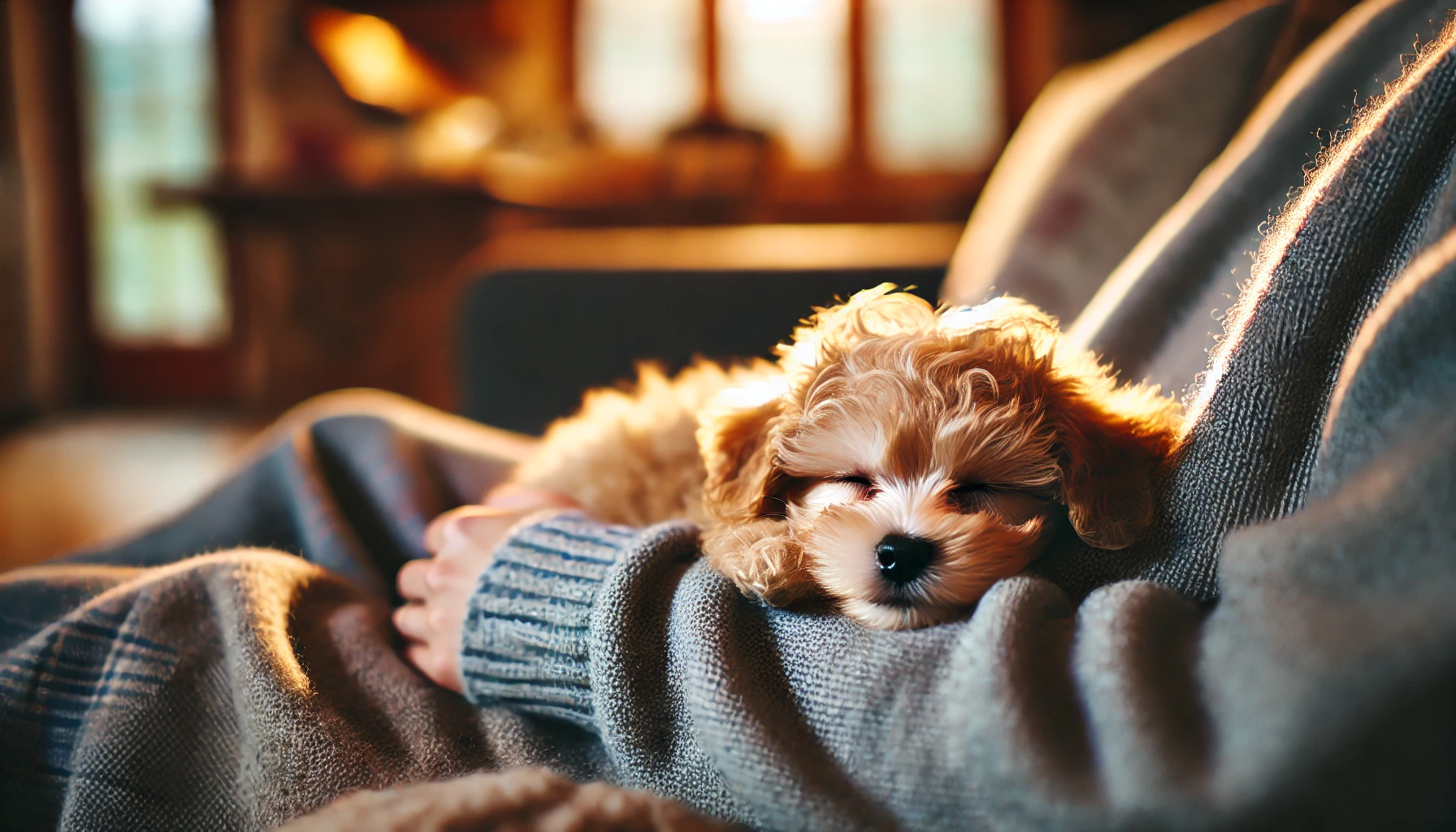
Teacup Maltipoos may be small in size, but with the right care, they can enjoy a long and happy life. On average, a Teacup Maltipoo has a lifespan of about 12 to 15 years, which is typical for smaller dog breeds. Some even live beyond this range, especially when they are kept in good health and receive regular veterinary care.
Factors That Influence a Teacup Maltipoo’s Lifespan
Several factors can influence how long a Teacup Maltipoo lives:
- Genetics: The genetic background of your Teacup Maltipoo plays a significant role in their overall health and lifespan. Reputable breeders who focus on producing healthy puppies with strong genetic lines can make a big difference in the longevity of your pet.
- Diet: A well-balanced diet is essential for any dog, but it's especially crucial for Teacup Maltipoos. These tiny dogs require a nutrient-rich diet tailored to small breeds to maintain their energy levels and overall health. Regular feeding schedules and appropriate portion sizes help prevent obesity and related health issues.
- Exercise: While Teacup Maltipoos don’t need as much exercise as larger dogs, they still benefit from daily physical activity. Short walks and playtime can help keep their weight in check and their muscles strong.
- Veterinary Care: Regular check-ups with a vet are key to catching potential health problems early. Preventative care, including vaccinations, dental check-ups, and screenings for common health issues, can significantly extend your Teacup Maltipoo’s lifespan.
- Lifestyle and Environment: Teacup Maltipoos thrive in safe, nurturing environments. Because of their size, they are more susceptible to accidents, so living in a calm household with careful supervision, particularly around young children or larger pets, is important.
RELATED: How Long Do Maltipoos Live?
Teacup Maltipoo Shedding

One of the many reasons people are drawn to the Teacup Maltipoo, aside from its adorable size and loving temperament, is its coat. Teacup Maltipoos are often touted as a low-shedding or even hypoallergenic breed, which makes them a popular choice for individuals or families with allergies. But how true is this claim, and what can you really expect in terms of shedding from a Teacup Maltipoo?
Do Teacup Maltipoos Shed?
Teacup Maltipoos do shed, but the amount is minimal compared to other dog breeds. This low level of shedding is largely due to their Poodle ancestry. Poodles are known for their curly, low-shedding coats, and when crossed with a Maltese—a breed that also has minimal shedding—the result is a dog that sheds very little is at all. The hair that does fall out tends to get trapped in the curls rather than falling to the ground or sticking to furniture, which can make the shedding less noticeable.
However, it’s important to remember that no dog is completely hypoallergenic. While Teacup Maltipoos may be easier on allergy sufferers, they can still produce allergens through their dander, saliva, and urine. Regular grooming and cleaning can help reduce these allergens in your home.
RELATED: Are Maltipoos Hypoallergenic?
Teacup Maltipoo Coat Types and Their Shedding Levels
The Teacup Maltipoo’s coat can vary depending on the traits it inherits from its parents. Typically, the coat is soft, wavy, or curly, and can come in a variety of colors, including white, cream, apricot, or a combination of these.
- Curly Coat: If your Teacup Maltipoo inherits more of the Poodle's curly coat, you’ll likely see less shedding. The curls trap the hair and reduce the amount that falls out.
- Wavy or Straight Coat: If the coat leans more toward the Maltese side, which can be wavy or straight, there might be slightly more shedding, but it’s still relatively minimal compared to other breeds.
RELATED: Complete Guide to All Maltipoo Colors
Caring for a Teacup Maltipoo
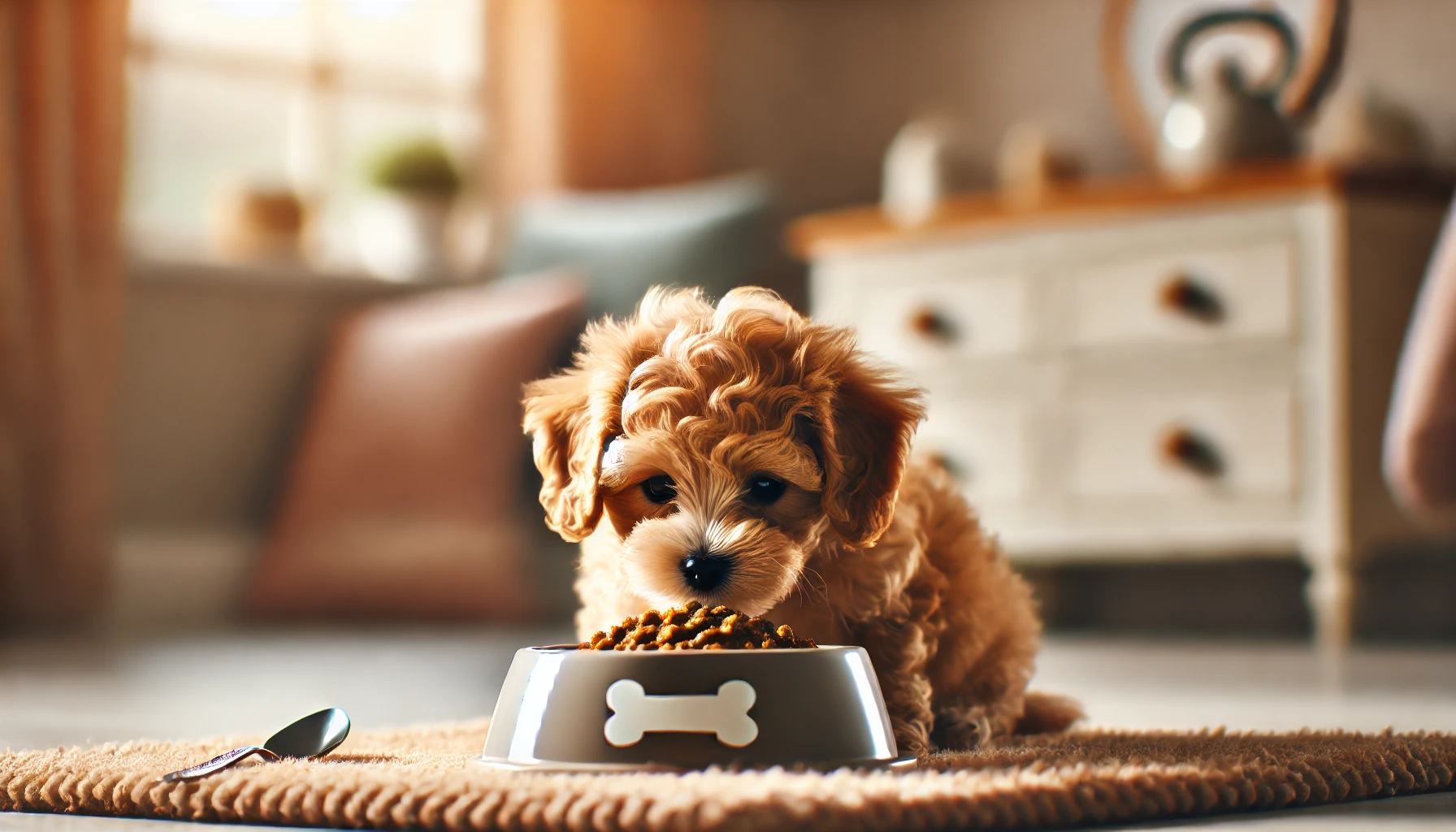
Owning a Teacup Maltipoo is a one-of-a-kind experience, but it also comes with unique responsibilities. These tiny dogs, with their delicate frames and loving nature, require attentive care to ensure they stay healthy and happy. From grooming to exercise, and diet to safety, every aspect of their care needs to be carefully managed.
Grooming a Teacup Maltipoo
Grooming is an essential part of caring for a Teacup Maltipoo. Their coats need regular maintenance to keep them looking their best and to prevent issues like matting and skin irritation.
- Brushing: Daily brushing is recommended to keep your Teacup Maltipoo’s coat tangle-free and shiny. Use a soft-bristle brush or a slicker brush to gently remove any knots. Regular brushing helps distribute the natural oils in their coat and promotes a healthy shine which in turn helps reduce the likelihood of mats.
- Bathing: Bathing your Teacup Maltipoo every 3 to 4 weeks is ideal. Use a mild, hypoallergenic dog shampoo to avoid irritating their sensitive skin. After bathing, make sure that their coat is thoroughly dried to prevent any skin problems that could arise from damp fur.
- Trimming and Professional Grooming: Regular trims are important, especially around the eyes, ears, and paws. Many owners opt for professional grooming every 6 to 8 weeks, which includes a haircut, nail trimming, ear cleaning, and sometimes teeth brushing. Keeping the coat trimmed helps manage shedding and keeps your Teacup Maltipoo comfortable.
- Dental Care: Dental hygiene is crucial for Teacup Maltipoos, as they are prone to dental issues due to their small mouths. Brushing their teeth several times a week with a dog-specific toothpaste can help prevent plaque buildup and gum disease.
- Ear Cleaning: Their ears should be checked weekly for dirt, redness, or a bad odor, which could indicate an infection. Use a vet-recommended ear cleaner and a cotton ball to gently clean the ears.
RELATED: Maltipoo Grooming Guide for Beginners
Exercise Needs of a Teacup Maltipoo
Despite their small size, Teacup Maltipoos need regular exercise to stay healthy and happy. However, their exercise needs are quite manageable compared to larger breeds.
- Daily Walks: A short walk of 15 to 20 minutes each day is usually sufficient. These little dogs don’t need extensive exercise, but they do benefit from the mental stimulation and socialization that come with regular walks.
- Indoor Play: Teacup Maltipoos love to play, and their small size makes indoor play sessions a great way to meet their exercise needs. Toys that challenge their minds, like puzzle toys or treat-dispensing toys, are especially beneficial.
- Avoiding Overexertion: Because of their tiny size, it’s important not to overexert your Teacup Maltipoo. Avoid activities that involve jumping from heights or rough play with larger dogs, as this can lead to injuries.
RELATED: Pros and Cons of Owning a Maltipoo
Training a Teacup Maltipoo
Training a Teacup Maltipoo can be an amazing experience, thanks to their intelligence and eagerness to please. However, their small size and delicate nature do require a gentle and consistent approach.
- Start Early: Begin training as soon as you bring your Teacup Maltipoo home. Early socialization and basic commands like sit, stay, and come are essential for building good behavior habits.
- Positive Reinforcement: Use positive reinforcement techniques, such as treats, praise, and playtime, to encourage good behavior.
- Consistency is Key: Be consistent with your commands and rules. Ensure that all family members use the same commands to avoid confusing your dog.
- Socialization: Expose your Teacup Maltipoo to different people, pets, and environments. This will help them grow into well-adjusted dogs that are comfortable in any number of situations.
- Potty Training: Potty training a Teacup Maltipoo requires patience. Because of their small bladders, they may need more frequent bathroom breaks. Crate training and setting up a regular routine can help with this.
RELATED: How to Train a Puppy
Best Diet for Teacup Maltipoos
A balanced diet is crucial for the health and well-being of your Teacup Maltipoo. Their small size means they have specific dietary needs that must be met to prevent health issues like hypoglycemia.
- High-Quality Dog Food: Choose a high-quality dog food formulated for small breeds. These foods typically have the right balance of protein, fats, and nutrients to support your Teacup Maltipoo’s health.
- Small, Frequent Meals: Due to their tiny stomachs, Teacup Maltipoos do best with small, frequent meals throughout the day. Feeding them three to four times a day can help maintain stable blood sugar levels and prevent hypoglycemia.
- Portion Control: Be mindful of portion sizes to avoid overfeeding, which can lead to obesity—a common problem in small dogs. Follow the feeding guidelines on the dog food packaging and adjust based on your vet’s advice.
- Hydration: Always ensure your Teacup Maltipoo has access to fresh, clean water. Hydration is essential, especially given their small size and susceptibility to dehydration.
- Avoiding Harmful Foods: Certain foods like chocolate, grapes, onions, and artificial sweeteners are toxic to dogs and should be kept out of reach. Be cautious about giving human food as treats and consult your vet before making any significant changes to their diet.
Safety Tips for Owning a Micro Teacup Maltipoo
Here are some tips to keep your tiny companion safe:
- Supervised Playtime: Always supervise playtime, especially if there are larger dogs or young children involved. A simple accident could lead to serious injury due to their fragile bones.
- Puppy-Proofing: Just like you would baby-proof a home, it’s important to puppy-proof your living space. Remove small objects that could be swallowed, secure electrical cords, and block off any areas where your Teacup Maltipoo could get stuck.
- Use a Harness Instead of a Collar: When taking your Teacup Maltipoo for walks, use a harness instead of a collar. Collars can put too much pressure on their delicate necks and tracheas, which can cause injury.
- Safe Sleeping Area: Provide a safe, comfortable sleeping area, such as a dog bed or a crate, that is away from drafts and off the floor. This protects them from the cold and ensures they have a cozy place to rest.
- Temperature Sensitivity: Teacup Maltipoos are sensitive to extreme temperatures, both hot and cold. In hot weather, avoid walks during the heat of the day, and in cold weather, consider using a dog sweater or coat to keep them warm.
How Much Does a Teacup Maltipoo Cost?
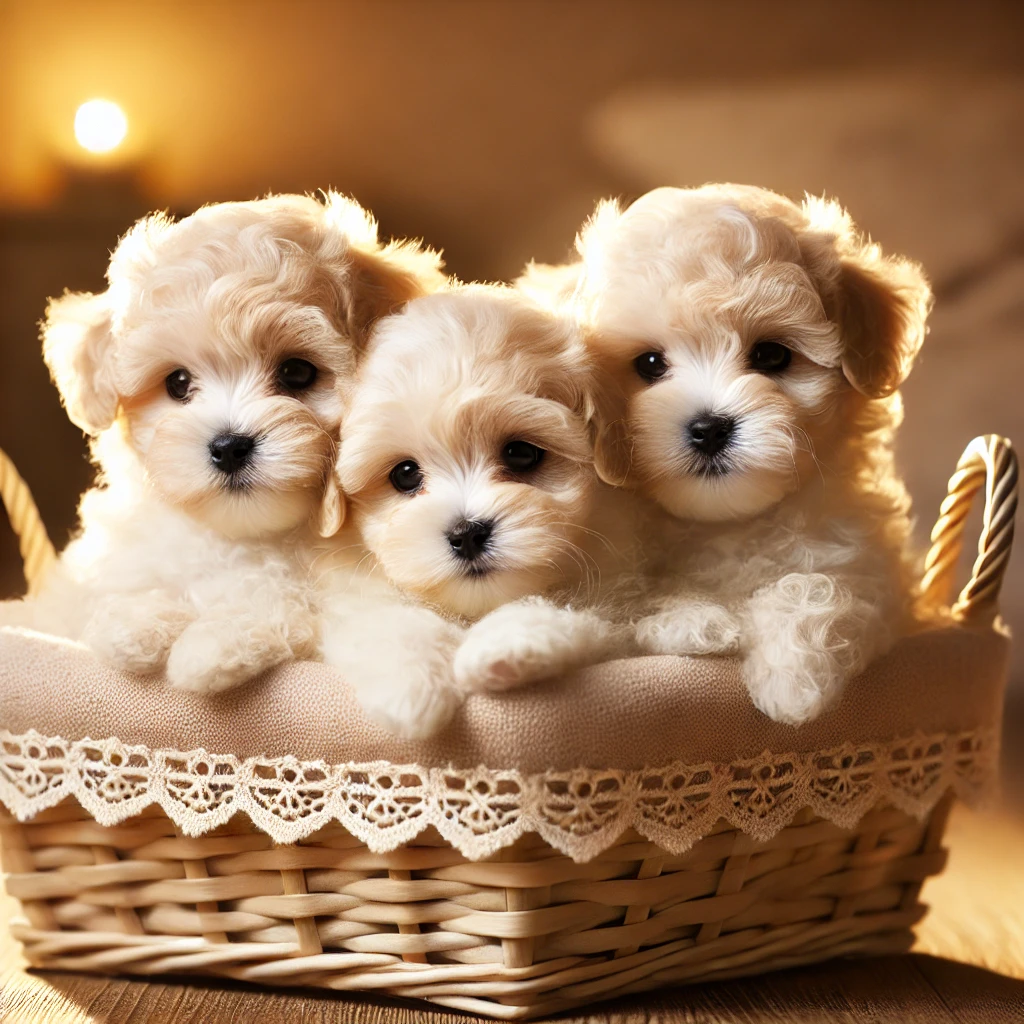
Teacup Maltipoos are in high demand. However, this demand, combined with the specialized breeding required to produce such tiny dogs, makes them one of the more expensive dog breeds available. The cost of a Teacup Maltipoo can vary significantly based on several factors, including the breeder’s reputation, the dog’s lineage, and the region where you purchase your puppy.
Factors That Influence the Cost of a Teacup Maltipoo
- Breeder Reputation: Reputable breeders who prioritize the health and well-being of their dogs tend to charge more. They invest in quality breeding practices, health testing, and proper care for the puppies. These breeders are often members of recognized dog breeding associations and offer health guarantees, which adds to the cost but also ensures that you’re getting a healthy, loved puppy.
- Lineage and Pedigree: If the Teacup Maltipoo has parents or grandparents with show-winning pedigrees or who are purebred with excellent health records, the price can increase. Puppies from champion lines are often more expensive due to their desirable traits and genetic background.
- Size: The smaller the dog, the higher the price. Since Teacup Maltipoos are bred to be particularly small, they typically command a higher price than their larger counterparts.
- Location: The cost can also vary depending on your geographic location. In areas where Teacup Maltipoos are in high demand, prices may be higher. Additionally, the cost of living in the breeder’s area can affect the price.
- Color and Coat Type: Certain coat colors or patterns may be rarer and therefore more sought after, leading to a higher price. Additionally, Teacup Maltipoos with a specific type of coat, such as a particular curl pattern, may be priced higher.
RELATED: See our available Maltipoo Puppies for sale
Average Price Range for a Teacup Maltipoo Puppy
On average, you can expect to pay anywhere from $2,000 to $5,000 for a Teacup Maltipoo puppy. However, prices can sometimes exceed this range, particularly for puppies from top breeders or those with exceptional lineage.
It’s important to be cautious of prices that seem too low, as they may indicate a breeder who is cutting corners, possibly at the expense of the dog’s health and well-being. Responsible breeders who follow ethical breeding practices and provide proper care for their puppies will typically charge more, reflecting the investment they’ve made in ensuring the puppies are healthy and well-socialized.
Additional Costs to Consider
When budgeting for a Teacup Maltipoo, it’s essential to consider the additional costs associated with ownership beyond the initial purchase price:
- Veterinary Care: Regular vet visits, vaccinations, and preventive care are essential for maintaining your Teacup Maltipoo’s health. Because they are prone to certain health issues, such as dental problems and hypoglycemia, you may also face additional vet expenses.
- Grooming: Teacup Maltipoos require regular grooming, which can be an ongoing expense. Professional grooming every 6 to 8 weeks is typical, along with regular home maintenance.
- Food and Supplies: Although they are small, Teacup Maltipoos still require high-quality food, as well as toys, bedding, and other supplies. High-quality dog food specifically formulated for small breeds is a must for their health.
- Training: Investing in professional training or obedience classes can be beneficial, especially for first-time dog owners.
- Pet Insurance: Given the potential health issues associated with small dog breeds, pet insurance is a wise consideration. It can help manage the costs of unexpected medical expenses.
Final Thoughts

The Teacup Maltipoo is a sweet and charming companion; a perfect fur baby for those who appreciate the joy of having a tiny, affectionate, and intelligent dog by their side. Despite their small size, Teacup Maltipoos are big on personality and love. Their friendly nature, coupled with their low-shedding coats, also makes them a great option for those with mild allergies.
However, owning a Teacup Maltipoo is not without its challenges. Their delicate size means they require special care, particularly when it comes to health, grooming, and safety. Potential owners must be prepared to invest time, effort, and resources into ensuring their Teacup Maltipoo lives a long, healthy, and happy life. This includes choosing a reputable breeder, providing a balanced diet, regular veterinary care, and ensuring they are safely and lovingly handled.
Scroll down to see FAQs about Teacup Maltipoos.
What To Read Next
Maltipoo Size Guide : How Big do Maltipoos Get?
15 Best Dog Breeds for First-Time Owners
Frequently Asked Questions
How big do Teacup Maltipoos get? Teacup Maltipoos are incredibly small, typically weighing between 2 to 5 pounds and standing about 6 to 8 inches tall.
What is the difference between a Maltipoo and a Teacup Maltipoo? The main difference lies in their size. While a standard Maltipoo can weigh between 5 to 20 pounds, a Teacup Maltipoo is bred to be much smaller, usually under 5 pounds. The term "Teacup" is a descriptive label used to denote the smallest size category within the Maltipoo breed.
How long do Teacup Maltipoos live? With good care, Teacup Maltipoos typically have a lifespan of 12 to 15 years. Their longevity depends on factors like genetics, diet, exercise, and regular veterinary care.
Are Teacup Maltipoos hypoallergenic? Yes, Teacup Maltipoos are considered hypoallergenic. They shed very little, if at all, and their coat tends to trap dander rather than releasing it into the environment, which makes them a better option for allergy sufferers. However, no dog is entirely hypoallergenic, so individual reactions can vary.
How much exercise do Teacup Maltipoos need? Teacup Maltipoos have moderate exercise needs. A daily 15 to 20-minute walk along with some indoor playtime is usually sufficient to keep them healthy and happy. Due to their small size, they should not be overexerted, and care should be taken to avoid rough play.
Are Teacup Maltipoos good with kids? Teacup Maltipoos are good with older children who understand how to handle them gently. Due to their delicate size, they might not be the best fit for families with very young children, as rough handling could lead to serious injuries.
Do Teacup Maltipoos bark a lot? Teacup Maltipoos can be prone to barking, especially if not properly trained. They might bark to alert you of strangers or due to anxiety when left alone. Early training and socialization can help manage excessive barking.
What should I feed my Teacup Maltipoo? A high-quality, small-breed dog food that meets their nutritional needs is essential. Teacup Maltipoos do best with small, frequent meals throughout the day to prevent hypoglycemia. It’s important to monitor their diet closely to avoid obesity and other related health issues.
How do I care for a Teacup Maltipoo's coat? Teacup Maltipoos require regular grooming to maintain their coat. Daily brushing is recommended to prevent tangles and mats, and they should be bathed every 3 to 4 weeks using a mild dog shampoo. Regular visits to a professional groomer for trims and maintenance will also keep their coat in top condition.




